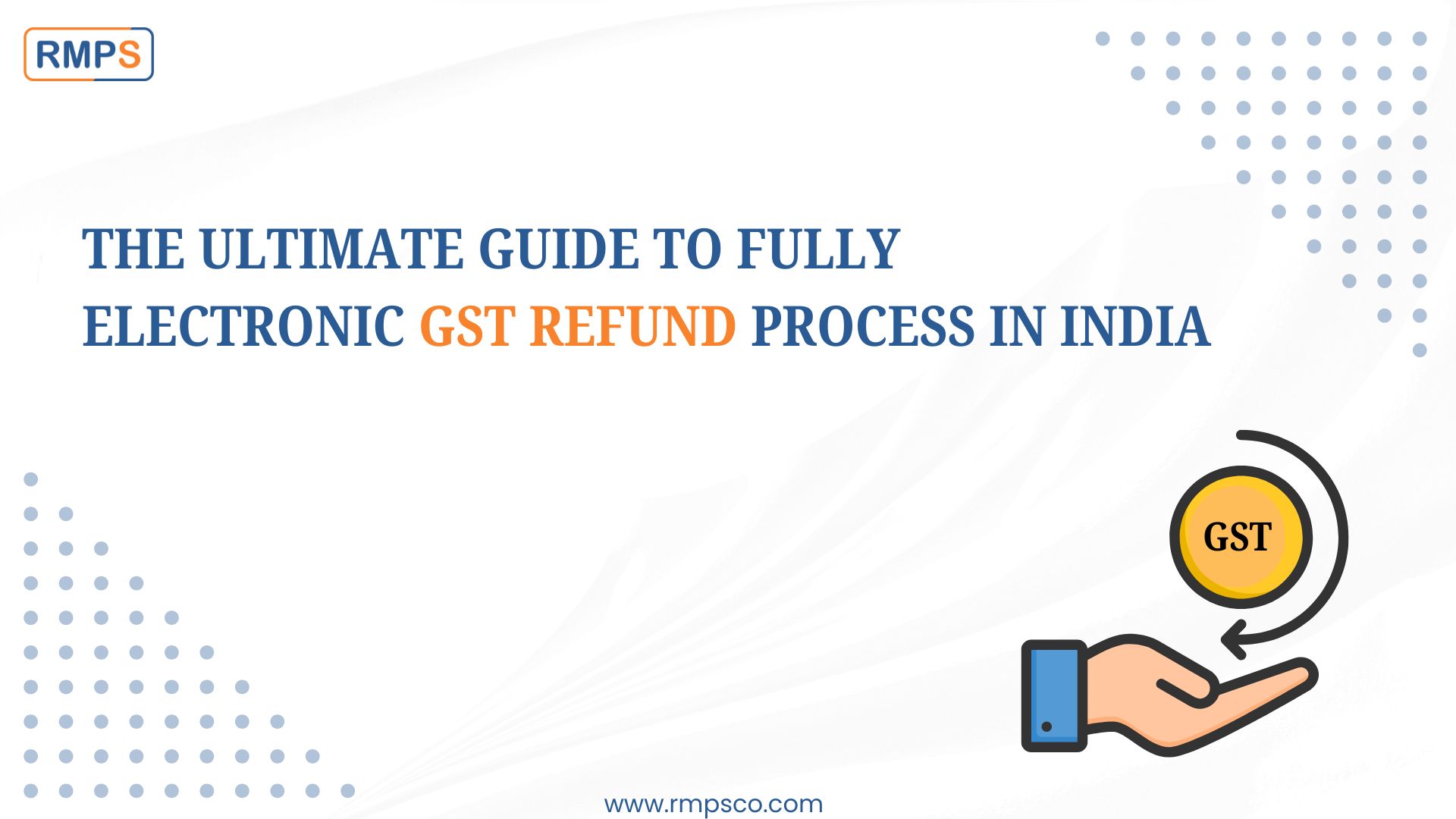
The introduction of the Goods and Services Tax (GST) brought significant changes to India’s tax structure. To ease the burden of tax compliance, the Central Board of Indirect Taxes and Customs (CBIC) introduced a fully electronic GST refund process via FORM GST RFD-01. This streamlined process offers businesses greater efficiency and transparency. Here’s an in-depth look at how businesses can benefit from this simplified system.
Why Transition to an Electronic Refund Process?
Previously, GST refunds required businesses to file physical documents after online submission, causing delays. Since September 26, 2019, the process has been fully digitized, ensuring faster processing and reducing bureaucratic hurdles.
Eligible Refund Types Under the Electronic Process
Businesses can file refunds electronically for:
- Unutilized Input Tax Credit (ITC) on exports without tax payment
- Tax paid on export of services or supplies to SEZ units
- Refund due to inverted tax structure
- Excess balance in the electronic cash ledger
- Errors in tax payments (e.g., intra-State vs. inter-State)
How to File GST Refund Applications
- Application Filing: Submit FORM GST RFD-01 on the GST portal.
- Document Upload: Upload required documents and invoices (maximum of 4 files, 5MB each).
- Application Reference Number (ARN): The system generates an ARN upon successful submission.
- Processing: Tax officials review applications online, ensuring timely resolution.
- Acknowledgment or Deficiency Memo: Receive FORM GST RFD-02 for acknowledgment or GST RFD-03 for corrections, if necessary.
Key Features of the Process
- No Physical Submission: All filings occur digitally, eliminating paper-based processes.
- Auto-Reassignment: Applications assigned to the wrong jurisdiction are redirected within three working days.
- Mandatory Return Filing: Refunds are processed only after submitting GSTR-1 and GSTR-3B.
Processing Timelines and Interest Payments
Refunds must be processed within 60 days of application receipt. If the deadline is missed, the government pays interest at 6% annually. Therefore, tax authorities aim to issue orders within 45 days to avoid interest payments.
Common Scenarios and Clarifications
- Export Refunds: Exporters can claim refunds even when invoice-shipping bill details differ.
- Deemed Exports: Both suppliers and recipients can claim refunds if declarations are filed properly.
- Compensation Cess Claims: ITC on inputs like coal is refundable even when the final product is tax-exempt.
Expanded Insights and Best Practices
- Understanding Refund Eligibility: Ensure that the claimed refund amount matches declared returns.
- Regular Reconciliations: Cross-check ITC records frequently to prevent mismatches.
- Compliance Audits: Conduct internal audits periodically to detect filing issues early.
- Accurate Documentation: Maintain all necessary invoices, declarations, and proof of export.
- Prompt Responses: Address deficiency memos quickly to avoid application rejection.
Tips for Smooth GST Refund Claims
- File accurate GSTR-1 and GSTR-3B returns.
- Double-check invoice and ITC details before submission.
- Respond promptly to deficiency memos.
- Stay updated on GST amendments and procedural changes.
Conclusion
India’s electronic GST refund process has revolutionized tax compliance, offering businesses a faster, transparent, and paperless experience. By following best practices and maintaining thorough records, businesses can ensure timely refunds, supporting smooth cash flow and operational efficiency.
LinkedIn Link : RMPS Profile
This article is only a knowledge-sharing initiative and is based on the Relevant Provisions as applicable and as per the information existing at the time of the preparation. In no event, RMPS & Co. or the Author or any other persons be liable for any direct and indirect result from this Article or any inadvertent omission of the provisions, update, etc if any.
Published on: December 13, 2024
